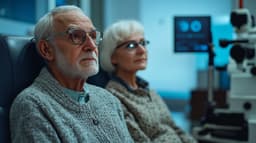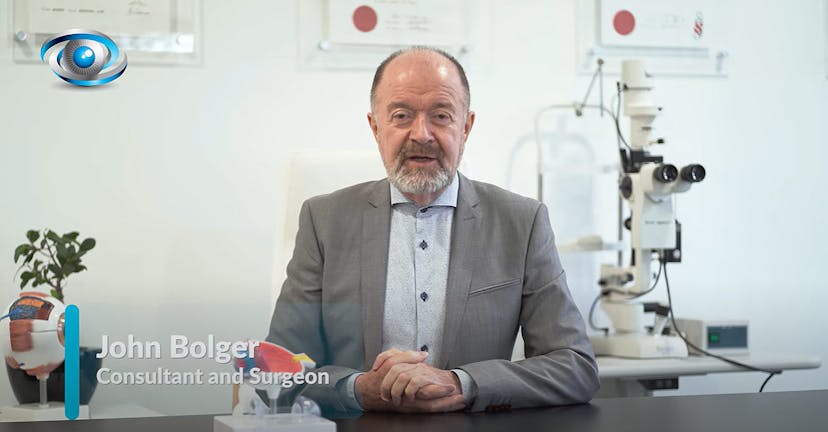
Introducing Low-dose Atropine For Kids
So, you’ve been to the opticians and have discovered that your child is myopic; the first thing you’re thinking is what is myopia?
To be simple, it is near-nearsightedness.
Myopia affects the way you see things by making it unclear unless it is relatively close to your eyes and is a very common refractive error among children and young adults.
Your vision becomes unclear because the eyeball is too long, relative to the focusing power of the cornea and lens of the eye. This causes light rays to focus at a point in front of the retina, rather than directly on its surface.
Near-nearsightedness also can be caused by the cornea and/or lens being too curved for the length of the eyeball. In some cases, myopia is due to a combination of these factors. However, your child is not alone.
Research suggests that back in 2000, roughly 25 per cent of the world’s population was near-sighted — but by the year 2050, it’s expected that roughly half the people on the planet will be myopic.
The most common symptoms of myopia are squinting, eye strain, headaches and fatigue. You may find that they sit too close to the television or don’t pay attention in school because they can’t see the board from where they are sitting.
Don’t ignore these signs and think they are just habits of children, early recognition and care can have a significant impact on the health of your child’s eyes.
According to Lisa Stewart, the main influence on myopia progression is genetics. A child whose parents are both myopic has six times the risk for myopia than a child with non-myopic parents.
What Can You Do To Help?
If your child has myopia, you’re probably trying to research if there are any cures or at least something that can delay the deterioration of your child’s vision. Watch carefully how your child interacts with you, if you smile, do they smile back?
If they are slightly older observe how close they sit to the television and ask your child’s teachers to inform you about their engagement in class. It has recently been explored how time spent outdoors is firmly associated with less myopic refraction.
You may want to consider myopia control methods to help your child’s vision stabilise.
My iClinic will be introducing myopia control methods such as specially designed contact lens contacts that are worn during the day in order to temporarily reverse myopia by reshaping the cornea.
There will also be the option of low-dose atropine drops. The lenses and drops that we prescribe can correct the blurry distance vision caused by myopia and relieve associated symptoms of myopia such as headaches, eye strain and squinting.
If you and the consultant then decide to go ahead with the drop treatment, ensure that you attend the follow-up appointments.
The drops will not work right away, this form of treatment needs to be monitored over a longer period of time.
Research shows that once atropine treatment stops myopia progression ramps up again so getting a diagnosis as early as possible and using atropine consistently through the eye’s growth years are crucial.

What Is Atropine?
Atropine is a medicine that is typically used to dilate the pupil and temporarily paralyze the eye’s ability to change focus from seeing one distance to seeing another. This completely relaxes the eyes’ focusing mechanism.
According to Nature, recent clinical trials demonstrated low-dose atropine eye drops such as 0.01% resulted in the slowing of myopia progression, with significantly fewer side effects compared to higher concentration preparation.
My iClinic will soon be one of the clinics that offer this treatment. Young children are best suited to this treatment as further research has shown that high myopia in adults can be linked back to myopia in their childhood.
Due to this, it is thought that it is better to implement effective measures to control myopia in young children. Adults with high myopia are at risk of developing degenerative changes in the macula, optic nerve and peripheral retina, this is known as pathologic myopia.
This can leave them at a higher risk of developing potentially blinding complications such as retinal detachments therefore we believe that it is best to get myopia under control whilst your child is young.
The Benefits Of Atropine
Atropine is a medication derived from the deadly nightshade plant (Atropa belladonna) and belongs to a class of drugs known as anticholinergics. It has several medical applications due to its ability to block the effects of acetylcholine, a neurotransmitter in the nervous system. Here are some of the benefits and uses of atropine from a vision correction standpoint.
- Dilation of Pupils (Mydriasis): Atropine is commonly used by ophthalmologists to dilate the pupils during eye examinations. This allows for better visualisation of the retina and other internal structures of the eye.
- Cycloplegia: It also helps in paralyzing the ciliary muscle of the eye, which is important in the treatment of certain eye conditions like uveitis and for certain eye surgeries.
Are There Any Side Effects?
There were no side effects reported. A study was undertaken to see if low-dose Atropine would influence the progression of myopia in young children.
The children who took part in the study showed no side effects which furthermore proves that low-dose Atropine may be a solution to help slow down the progression of myopia in your child’s eye.
If you believe that this treatment will be better suited for your child, please feel free to give us a call - 020 8445 8877 or book a consultation to find out more information.
To find out more information about the leader of our My-iClinic, Mr John Bolger and our paediatric consultant, Ms Bola Odufuwa.
Find out more by Speaking to our team









